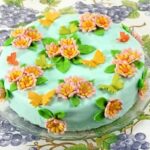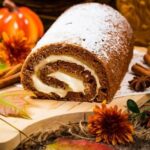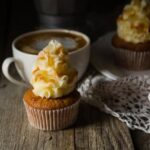Are you looking to add a creative and beautiful touch to your cakes? Learning how to decorate cake with icing can take your baking skills to the next level. Whether you’re a beginner or an experienced baker, mastering the art of icing can open up a world of possibilities for expressing your creativity and impressing your friends and family.
When it comes to decorating cakes with icing, there are various techniques, types of icing, and tools that can be used to achieve stunning results. From buttercream to fondant, royal icing, and more, each type of icing offers its own unique texture and look, allowing you to create different designs and decorations.
In this article, we will explore the different types of icing, essential tools and equipment for decorating cakes, step-by-step guides on how to ice a cake like a pro, techniques for creating beautiful designs with icing, tips and tricks for perfecting your skills, as well as common mistakes to avoid. Additionally, we will delve into advanced decorating techniques for adding details and finishing touches with icing.
Whether you’re looking to create simple yet elegant designs or intricate works of art on your cakes, mastering the art of decorating with icing is an essential skill for any baker.
Types of Icing
When it comes to decorating a cake with icing, the type of icing you use can make all the difference in the final result. There are several different types of icing that are commonly used in cake decorating, each with its own unique characteristics and applications.
1. Buttercream: This classic icing is made from butter, powdered sugar, and flavorings such as vanilla or cocoa. It is smooth and creamy, making it ideal for spreading and piping onto cakes. It can also be easily tinted with food coloring to create vibrant designs.
2. Fondant: Fondant is a pliable icing made from sugar, water, and gelatin. It can be rolled out into thin sheets and draped over a cake for a smooth, porcelain-like finish. Fondant is popular for creating intricate decorations such as flowers, ribbons, and figurines.
3. Royal Icing: Made from confectioners’ sugar and egg whites or meringue powder, royal icing dries to a hard, shiny finish. It is often used for delicate piping work, intricate lace designs, and creating 3D decorations like gingerbread houses.
4. Ganache: This rich chocolate mixture of cream and chocolate is perfect for glazing cakes or creating a smooth coating before adding fondant or other decorations.
5. Cream Cheese Frosting: Cream cheese frosting has a tangy flavor that pairs well with red velvet cakes and carrot cakes. It’s soft and creamy texture makes it great for layering between cake layers or spreading on top of cupcakes.
Whether you’re looking to achieve a smooth finish with fondant or create elaborate designs with royal icing, choosing the right type of icing for your cake decorating project is essential in achieving your desired look.
Essential Tools and Equipment for Decorating Cakes With Icing
When it comes to decorating cakes with icing, having the right tools and equipment is essential for achieving professional-looking results. Whether you’re a beginner or a seasoned baker, having the proper supplies can make all the difference in your cake decorating endeavors. Some of the essential tools and equipment for decorating cakes with icing include piping bags, offset spatulas, cake turntables, and various types of icing tips.
Piping bags are a must-have tool for anyone looking to decorate cakes with icing. These disposable or reusable bags allow you to pipe different designs and patterns onto your cake using various types of tips. Whether you’re creating intricate flowers or writing a personalized message, piping bags are versatile and indispensable when it comes to cake decorating.
Another essential tool for decorating cakes with icing is an offset spatula. This angled spatula allows for precise smoothing and spreading of icing on the surface of the cake. It’s also useful for creating textured designs and patterns in the icing, giving your cake a professional finish.
Cake turntables are also crucial for achieving smooth and even icing on your cakes. These rotating platforms allow you to easily access all sides of the cake while applying icing, resulting in a more uniform and polished appearance. Additionally, various types of icing tips, such as round tips, star tips, and petal tips, are essential for creating different designs and textures with icing.
Step-by-Step Guide
Now that you have chosen the type of icing for your cake, it’s time to learn how to decorate a cake with icing like a professional. Follow these steps to ensure a smooth and beautifully decorated cake.
Prepare the Cake
Before you begin decorating, it’s important to make sure that your cake is properly prepared. This includes leveling the layers, filling and stacking them, and applying a crumb coat. A crumb coat is a thin layer of icing that helps seal in any crumbs and provides a smooth base for the final layer of icing.
Apply the Base Coat
Once your cake is prepped, it’s time to apply the base coat of icing. Using an offset spatula, start by adding a generous amount of icing to the top of the cake. Smooth it out towards the edges and then work your way down the sides of the cake, adding more icing as needed. The goal is to create an even layer of icing all over the cake.
Create Texture and Designs
After applying the base coat, you can get creative with different texturing techniques or use piping bags with various tips to create beautiful designs on your cake. Whether it’s swirls, dots, flowers, or intricate patterns, using different techniques will add depth and visual interest to your cake.
By following these steps and experimenting with different techniques, you can elevate your cakes from amateur-looking to professional-quality masterpieces. Remember to have fun and practice regularly to improve your decorating skills.
Techniques for Creating Beautiful Designs With Icing
When it comes to decorating a cake with icing, there are numerous techniques that can be used to create beautiful designs and patterns. Whether you’re a beginner or an experienced baker, mastering these techniques can take your cake decorating skills to the next level.
Piping
Piping is a classic technique for creating intricate designs on cakes with icing. Using a piping bag fitted with different tips, such as round, star, leaf, or petal tips, you can pipe out various shapes and patterns onto the cake. From flowers and leaves to elaborate borders and writing, the possibilities are endless with piping.
Spreading and Smoothing
Another essential technique for creating beautiful designs with icing is spreading and smoothing. This involves applying a layer of icing onto the cake and using a spatula or bench scraper to smooth it out for a clean finish. This technique is often used for creating simple yet elegant designs, such as smooth ombre or marbled effects on the cake.
Fondant Embellishments
Fondant is another popular medium for creating beautiful designs on cakes. It can be rolled out and cut into various shapes, such as flowers, ribbons, and intricate patterns, to decorate the cake. Fondant can also be molded and sculpted into three-dimensional figures or objects to add an extra touch of artistry to the design.
By mastering these techniques and experimenting with different styles and ideas, you can elevate your cake decorating skills and create stunning designs that will impress your friends and family. Whether you prefer the classic elegance of piping or the modern flair of fondant embellishments, there’s no limit to what you can achieve when decorating cakes with icing.
Tips and Tricks for Decorating With Icing
Decorating a cake with icing can seem like a daunting task, but with the right tips and tricks, you can achieve beautiful results. One of the most important things to remember when decorating with icing is to ensure that your icing consistency is just right.
If it’s too runny, it won’t hold its shape when piped, and if it’s too stiff, it will be difficult to spread. To achieve the perfect consistency, be sure to follow your recipe carefully and make any necessary adjustments as needed.
When it comes to piping icing onto a cake, using the proper technique is key. Whether you’re creating intricate designs or simply writing a message on your cake, practicing your piping skills beforehand can make all the difference. It’s also important to choose the right piping tip for the job – small round tips are great for writing and outlining, while larger star tips can create beautiful borders and rosettes.
In addition to piping, spreading icing smoothly and evenly onto a cake is another essential skill for any decorator. To ensure a flawless finish, start by applying a thin layer of icing (also known as a crumb coat) to the entire cake and allowing it to set before adding a second layer. This will help prevent crumbs from getting into your final layer of icing and result in a professional-looking finish.
| Tips and Tricks | Techniques |
|---|---|
| Choose the right piping tip | Piping techniques |
| Apply a crumb coat | Spreading evenly |
Common Mistakes to Avoid When Decorating Cakes With Icing
When decorating a cake with icing, there are common mistakes that can easily be avoided with the right knowledge and techniques. Here are some of the most common errors to watch out for:
- Not properly preparing the cake surface: Before applying any icing, it’s crucial to ensure that the cake is leveled and crumb-coated. This smooth base will make it easier to apply the final layer of icing without any lumps or bumps.
- Using too much icing: While it may be tempting to slather on a thick layer of icing, overdoing it can lead to a cloyingly sweet and unbalanced cake. Use just enough icing to cover the cake evenly, keeping in mind that less is often more.
- Applying warm icing to a hot cake: If the cake has not completely cooled, spreading on icing can result in a messy, melted disaster. Be patient and allow the cake to cool fully before decorating.
Another mistake to avoid when decorating cakes with icing is using expired or improperly stored ingredients. Fresh ingredients are essential for achieving the best flavor and texture in your icing. Always check expiration dates and store your ingredients properly.
In addition, rushing through the decorating process can lead to sloppy results. Take your time and allow each layer of icing to set before moving on to additional designs or details. Patience is key when creating a beautifully decorated cake with icing.
Advanced Decorating
In conclusion, mastering the art of decorating cake with icing can take your baking skills to the next level. Whether you prefer buttercream, fondant, royal icing, or any other type of icing, there are endless possibilities for creating beautiful designs and adding exquisite details to your cakes. With the right tools and equipment, along with some practice and patience, you can become a pro at ice a cake like a professional baker.
Once you have mastered the basics of icing a cake, you can move on to advanced decorating techniques. Adding details and finishing touches with icing allows you to truly showcase your creativity and skill. From intricate piping designs to stunning color gradients and fondant sculpting, there are countless ways to elevate your cake decorating game.
As you continue to explore the world of decorating with icing, remember to keep practicing and experimenting with new techniques. Don’t be afraid to make mistakes along the way – they are all part of the learning process. With time and dedication, you can create show-stopping cakes that will impress everyone who sees them. So go ahead, grab your piping bag and get ready to decorate cake with icing like a true artist.
Frequently Asked Questions
What Do You Use to Decorate a Cake With Icing?
When decorating a cake with icing, there are various tools you can use to achieve different designs and effects. Piping bags and tips are commonly used to create borders, flowers, and intricate patterns. Offset spatulas are great for creating smooth surfaces and spreading the icing evenly.
How Do You Make Icing Look Pretty on a Cake?
Making icing look pretty on a cake involves using different techniques such as piping, spreading, or drizzling the icing in an artistic manner. You can use a combination of tools like stencils, edible glitter, or food coloring to add visual appeal to the icing. Additionally, adding embellishments like fresh fruit, edible flowers, or chocolate shavings can enhance the overall presentation.
What Is the Best Frosting to Decorate a Cake?
The best frosting for decorating a cake depends on personal preference and the desired outcome. Buttercream frosting is versatile and easy to work with, making it a popular choice for decorating due to its smooth texture and ability to hold intricate designs. Royal icing is another option for detailed decorations as it hardens when dry, making it ideal for creating 3D elements or intricate patterns on cakes.
Fondant is also popular for its ability to create a flawless finish and unique decorations on cakes, but it may not be everyone’s favorite in terms of taste. Ultimately, the best frosting for decorating a cake will depend on the specific design and taste preferences of the baker or decorator.

Welcome to our cake decorating blog! My name is Destiny Flores, and I am the proud owner of a cake decorating business named Cake Karma. Our mission is to provide delicious, beautiful cakes for all occasions. We specialize in creating custom cakes that are tailored specifically to each customer’s individual needs and tastes.





